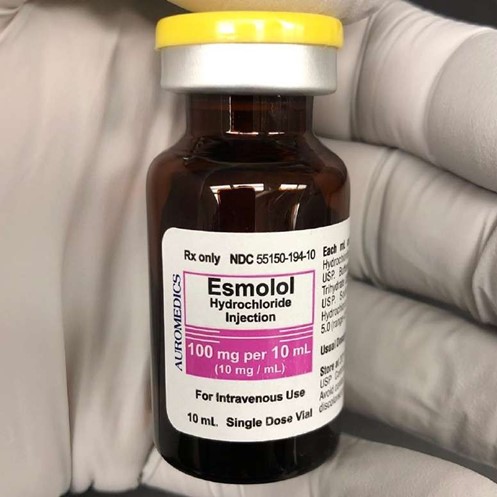A nurse needs to infuse esmolol to a client weighing 65 kg. The dose on hand is 2,500 mg esmolol in 250 mL of fluid. The client requires a dose of 200 mcg/kg/min. Which rate should the nurse calculate to infuse this medication?
Round to the nearest whole number.
5 mL/hr
6 mL/hr
13 mL/hr
78 mL/hr
The Correct Answer is D
First, we need to calculate the total dose of esmolol required per minute: Total dose = Weight x Dose x 60 minutes
Total dose = 65 kg x 200 mcg/kg/min x 60 minutes Total dose = 780,000 mcg/min
Next, we need to convert the dose to milligrams (mg):
780,000 mcg/min = 780 mg/min
The concentration of the esmolol solution is 2,500 mg in 250 mL or 10 mg/mL. To deliver 780 mg/min at a concentration of 10 mg/mL, we need to infuse: Infusion rate = Total dose / Concentration
Infusion rate = 780 mg/min / 10 mg/mL Infusion rate = 78 mL/min
Rounding to the nearest whole number, the answer is D. 78 mL/hr.
Therefore, the nurse should calculate an infusion rate of 78 mL/hr to deliver the required dose of esmolol to the patient.

Nursing Test Bank
Naxlex Comprehensive Predictor Exams
Related Questions
Correct Answer is C
Explanation
To calculate the dose of ondansetron for this client, we need to use the client's weight and the prescribed dose of 0.34 mg/kg.
The formula to calculate the dose is:
Dose (in mg) = Weight (in kg) x Dose (in mg/kg) So, for this client:
Dose (in mg) = 70 kg x 0.34 mg/kg
Dose (in mg) = 23.8 mg (rounded to one decimal place)
Therefore, the client should receive a dose of 23.8 mg of ondansetron, 30 minutes prior to chemotherapy.
Correct Answer is C
Explanation
The correct answer is choice C, 3 tablets. To calculate the number of tablets, divide the ordered dose by the available dose:
75 mg ÷ 25 mg = 3
The nurse should administer 3 tablets of Coumadin 25 mg to the patient to give a total dose of 75 mg.
Whether you are a student looking to ace your exams or a practicing nurse seeking to enhance your expertise , our nursing education contents will empower you with the confidence and competence to make a difference in the lives of patients and become a respected leader in the healthcare field.
Visit Naxlex, invest in your future and unlock endless possibilities with our unparalleled nursing education contents today
Report Wrong Answer on the Current Question
Do you disagree with the answer? If yes, what is your expected answer? Explain.
Kindly be descriptive with the issue you are facing.
